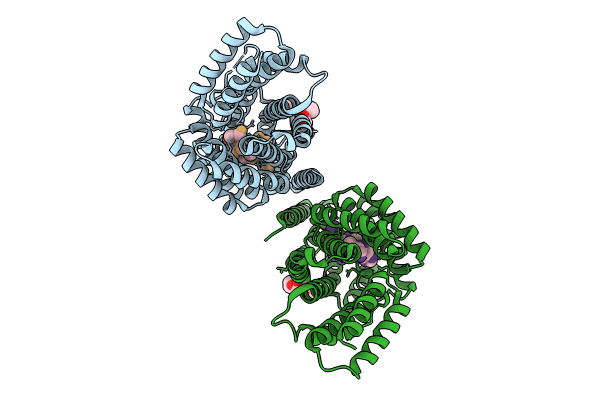
Deposition Date
2024-01-25
Release Date
2024-07-24
Last Version Date
2024-08-28
Entry Detail
PDB ID:
8RSV
Keywords:
Title:
Rap from bacteriophage Phi3T in presence of pheromone RRGHTAS
Biological Source:
Source Organism:
Bacillus phage phi3T (Taxon ID: 10736)
Host Organism:
Method Details:
Experimental Method:
Resolution:
2.19 Å
R-Value Free:
0.23
R-Value Work:
0.20
R-Value Observed:
0.21
Space Group:
P 1 21 1


